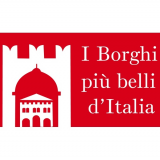
 I borghi più belli d'Italia
I borghi più belli d'Italia
Italian Little Italies: San Lorenzo in Banale, Efforts hidden within the walls
- WTI Magazine #97 Nov 18, 2017
-

 I borghi più belli d'Italia
I borghi più belli d'Italia
The village set on a large sunny green terrace overlooks the valley with the Dolomites of Brenta behind it. San Lorenzo is an ancient village created by the merging of seven Villas: Berghi, Pergnano, Senaso, Dolaso, Prato, Prusa and Glolo. Placed at the entrance of the beautiful Ambiez Valley, you can access the Adamello-Brenta Nature Park from the village.
The visit to the seven villas must start at the Casa del Parco “C’era una volta” ("Once upon a time"). Set in the beautiful Casa Osei, it gathers together the entire peasant history of this land.
The communal theatre close-by is an ancient deconsecrated church that has been admirably restored thanks to the good will of its inhabitants, a place where the spirituality of art is the same as that of religion. Still in Prato, the next villa is Prusa, the lowest villa. Casa Mazoleti catches the eye, a perfect example of rural architecture: on the ground floor there are cellars and stables, the kitchen and bedrooms are on the first floor, on the third and fourth floors are the sheltered threshing-floor and the hay-loft and the floor under the roof, accessible using ramps, was used to dry hay.
Enriched by an open arched gallery and a perfectly preserved sun-dial, in autumn it is the setting for the festival of ciuìga. Carrying on in an anti-clockwise direction, you arrive at Glolo, placed in the privileged position of “ancella”, "maid-servant", to the Mani Castle, its name in the local language (“Grol”) is used by children playing with snails to make them hitch up their horns.
After crossing the state road 421 you will find Berghi (from “Berg”, “mountain”) from which the paved road called Via Cavada passes, a route marked up by the tracks left by sledges. The XII century church is dedicated to Santa Apollonia, beside it there is the beautiful rural Casa Martinoni. Known for its imposing dimensions and also for the name “dos dei frà”; “hill of the friars” where it was built the house was assumed to be a Monastery. Further on you will find Casa Moscati, which has been learnedly restored.
From Berg you arrive at Pergnano, which basks in the sun. The church, dedicated to S. Rocco and S. Sebastiano, preserves frescos by Baschenis of Averaria, enjoyable for their brightness and freshness: they have few colours of great chromatic effect. From Pergnano you get to Senaso, the most well preserved hamlet, for which a restoration project has been planned. The villa is full of malgari and dairymen’s memories and of hunting and ciuìghe producers. Smoke-curing of salami continues today and takes place each autumn inside the ancient dairy. The Church of S. Matteo has preserved the old churchyard, while Casa dei Sartorei is a precious testimony of a rural house, with the hay-loft hurdles and the large old stable portal.
Continuing on to Dolaso, the seventh village, you have to take the road for the Ambiéz Valley. After a few hundred meters, there is a field called "le Braile” (a Longobard term which describes an extension in the plan) you get to a capital that a certain Marin Cornelia commissioned in the eighteenth century “per sua devocione”, for his devoutness to the Virgin Mary. In the village there are twelve capitals dedicated to this.
The name
The name Banale is of paneuropean origin linked to its leaders and feudal obligations, it derives from the same origins as the French word banlieu and of Banato and Banovina in the Balkans. It is the seventh Pieve of the Giudicarie valleys, San Lorenzo is placed on the western side, for this reason in the past it was called Banale to Castel Mani to distinguish it from the neighbouring Banale to Castel Stenico.
The product
The ciuìga, a salami with a unique sharp taste, was invented in the second half of the nineteenth century, during a period of difficult economic restrictions. Nowadays this typical product is made exclusively in the village of San Lorenzo according to tradition and is recognised as a Slow Food. It is prepared in autumn, when butchers slaughter the pigs and the turnips are ready for harvesting.